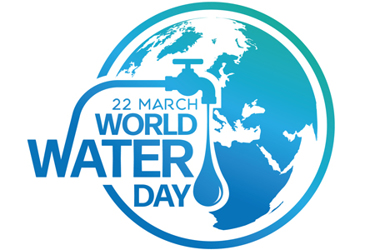World Water Day 2023: How The Water Industry Can "Accelerate Change"
By Dave Purkiss, Vice President of Global Water, NSF; Marcos Bensoussan, Senior Manager of LATAM Water, NSF; Vincent Boks, Managing Director EMEA, Water Division, NSF; and Dr. John Shan, Senior Director of China, NSF

Globally, we are on a tight schedule to get our planet moving in the right direction regarding the climate crisis. While the COP (Conference of the Parties) meetings are working to collaborate and design a plan to contain the threats at hand, we still lack major negotiating deadlines. With World Water Day 2023 coming up on March 22 with the theme of “Accelerating Change”, the day urges individuals to recognize how they consume and manage water in their lives and make necessary changes to help utilize it better.
The water industry has an opportunity to play a leading role in reducing waste and contributing to water reuse while our global leaders continue to work out a plan. Proactive changes can help improve a utility’s environmental footprint and prove its commitment to sustainability to stakeholders. Ranging from embracing recent technology, reducing the resources they use, and recycling water, water utilities can decrease their carbon footprint to help improve the climate.
Reducing Energy Consumption
According to Huber Technology, recycling heat energy from wastewater can reduce heating and cooling costs by up to 80%. Most sewer systems maintain a temperature between 10–20° C throughout the year, which can be used with a heat exchanger and heat pump to provide heat in the winter and cooling in the summer.
In addition to using geothermal systems, companies can also reduce their energy consumption by generating their own renewable energy, such as solar, wind, and hydro power. This sustainable technology requires low maintenance costs, which is a double win for plant operations. With water utilities being a main component of our critical infrastructure, it is imperative that they are energy independent. Providing clean drinking water to communities is mission-critical, especially if the infrastructure is threatened by any outside source. These allow utilities to better control the quality and availability of water to their communities.
“With the way that we are moving globally towards more sustainable energy options, the water industry should lead the way by reducing reliance on fossil fuels,” states Dr. John Shan, Senior Director of NSF China. “The amount of energy and money saved through these options only compounds over time.”
Utilizing Water Sensors
According to usbr.gov, only 0.5% of the earth's water is fresh water. By installing leak-detection solutions, municipal water companies can operate more efficiently and reduce their water use. This concept is exemplified by a water utility in Utah that installed a leak detector and saved 100 gallons of water per minute by identifying seven pipe leaks. In addition to the imperative water savings of leak detections, it helps reduce the considerable amount of time and energy to effectively turn water into potable water for communities.
Dave Purkiss, Vice President of NSF’s Global Water Division, states, “Water is our most precious resource. Considering the massive amounts of water our industry works with daily, and according to the EPA, an average water loss around 16% in the U.S., it is our responsibility as an industry to be on top of leaks to help conserve water and energy wherever we can.”
Recycling Water
Water reuse systems treat grey water from sinks and washing machines so they can be reused for applications that don’t require drinking water such as flushing toilets or watering gardens. Many systems are available for use in homes and in commercial businesses. Using grey water for non-potable uses can be a lot cheaper than purchasing potable water. This is due to the reduced energy consumption required to transport water, especially to drought areas, on top of reducing the time and treatment needed to run through the drinking water distribution system again.
“There are many areas not only in Latin America but around the world that are experiencing extreme droughts,” states Marcos Bensoussan, Senior Manager of LATAM Water, NSF. “While water reuse may seem to many people a new idea right now, in a few years, it will be as common as recycling paper and bottles. We will wonder why we were not doing it sooner.”
Water Reduction Education
The water industry has a credible and trusted voice in guiding the public to adjust their water use to help positively impact our water usage. Things like watering the lawn in the morning or evening, fixing household leaks, and composting food waste instead of using garbage disposal are all simple things we can educate the public on. While it may seem that minor changes like these will not make a massive impact, they do. For example, the U.S. EPA states that the average American’s shower lasts eight minutes on average, using 2.1 gallons per minute. That is over one trillion gallons of water across the U.S. used each year. If everyone cut down their shower by half, we could save approximately 91,000 Olympic-sized swimming pools of water per year!
Vincent Boks, Director of EMEA Water, NSF states, “This concept really goes back to the idea of changes compounding impact over time. Fixing the water crisis is a global effort that we are all responsible for."
World Water Day is an important day to recognize what we can all do as we continue working towards a sustainable future. Promoting the idea of sustainable living to our communities will help us make meaningful progress towards reducing water use and make a significant contribution to the health of our planet. Now is not the time to wait for politicians to solve the crisis but rather to act and help “Accelerate Change.” Find out how you and your organization can get involved by visiting WorldWaterDay.org.
